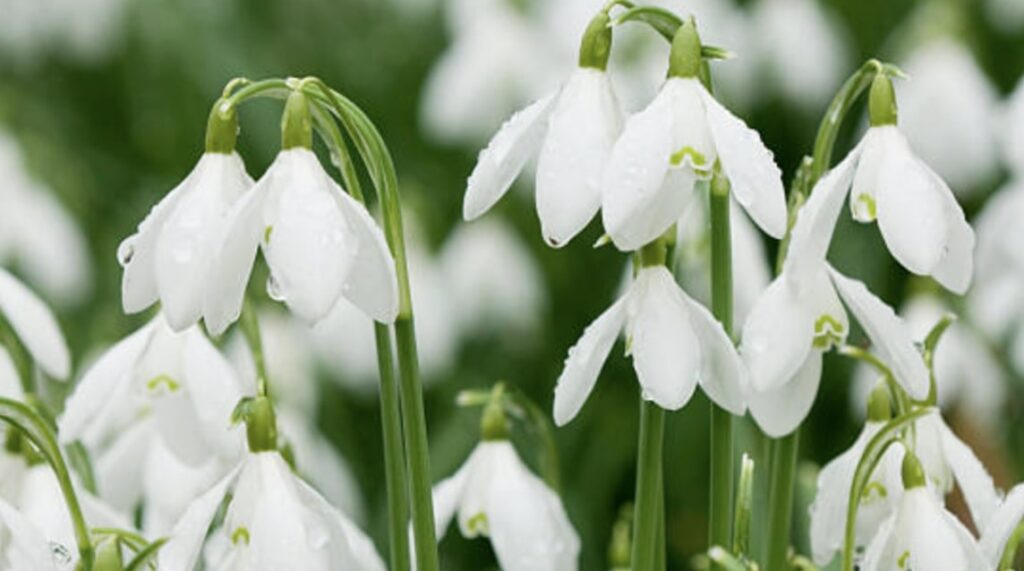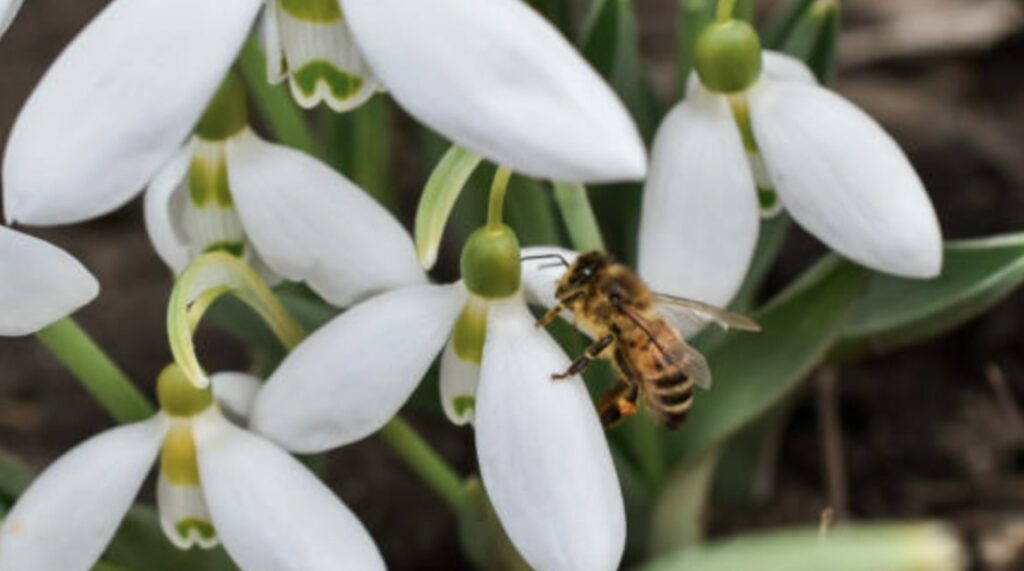Snowdrops are incredible winter blooms. They’re best known for their pure white color, droopy structure, and thick green leaves.
There’s a lot to know about this interesting flower, and we’re here to discuss it. So let’s get into its basic information, history, and wonderful meaning.
About the Snowdrop Flower


The snowdrop flower is sometimes known as Galanthus. This genus is comprised of twenty varieties of bulb-flowering perennials that belong to the Amaryllidaceae family.
Its flower has a soft form of a bell. It’s comprised of six tepals—three on the outside (sepals) and another smaller three (petals) within that show green markings.
The round part to which the flowers are attached is the ovary of the flower. And the boat-like or sheath part (much like a sword in a sheath) where the stem grows from is called the spathe.
They stand on a healthy slender stalk and have dual and simple foliage. Snowdrops are small compared to other flowers, growing less than 12 inches of height at maturity.
What’s more, the snowdrop has a pleasing sweet scent akin to honey, making it great to have or give as cut or garden flowers.
The History of Snowdrops
Though people believed that this flower is native to Great Britain, it first actually grew in other parts of Europe and the Middle East. It was the Romans who brought the snowdrop to Britain.
As early as the 4th century BC, this flower was referred to as white violets by botanist and philosopher Theophrastus in his writings.
Before it got its perfect name, it was known as Galanthus nivalis or “milk flower of the snow.” Swedish botanist Carl Linnaeus gave it this name in 1753.
Later on, snowdrops continue to spread outside of Europe, including North America, where they have naturalized. And so, they’re available to purchase from many florists there.
Snowdrop Flower Meaning


Snowdrops are one of a handful of flowers that come only in white. Therefore, it’s generally taken to mean purity.
But keep in mind that they also suggest a negative idea. That is death and misfortune due to its bowing appearance, and they were said to have been commonly grown in many cemeteries before.
And so the meaning evolved from just purity to sadness, grievance, sympathy, and consolation. Giving these flowers to a bereaved person can signify your support through a tough time.
Nevertheless, in the present time, they also symbolize hope and rebirth, as it’s one of the very first flowers to grow in late winter. And if you look closely, you can see that their wilted shape is rather beautiful.



